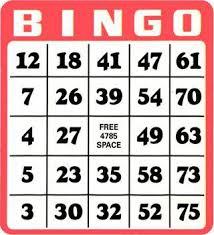Three Methods to Understand Your Buyers and Markets Today …ASK!
It is not unusual the simplest of strategies are often the most difficult for some people to execute. Why? Why is it so important to understand buyer and market needs today? Sales teams who understand their buyers, how buyers buy and what they need to make buying decisions today achieve their sales goals. When salespeople approach buyers and their markets with dated value propositions and not address current market problems sales teams fail to hit goals. In this post I will share three ways to better understand your buyers and markets.
In my last post I asked a question: What if I told you growing your sales profitably is actually “Simple” if you focus on one strategy? I shared the key to growing your sales and profits are: know your customers and markets. So far no one argues with that premise. However the behavior that needs to change (and quick) is companies who assume they understand their markets based on dated information. They have leaders who believe their gut and intuition that have gotten them this far will help them lead their teams to future wins. My argument is, as I shared in 2009, the sales game has changed and your gut and intuition are not enough to win today. We serve dynamic markets that are constantly changing and shifting. A value proposition that resonated with buyers six months ago may no longer connect due to a shift in economic conditions and or a new technology.
“Companies who build strategic plans based on dated market information fail. “
– Mark Allen Roberts
In a recent post by SBI they asked the question: Could last year’s market research be killing your chances to achieve next year’s sales goals? If you have not read this post I highly recommend you take a few minutes to review it. As shared in their post:
“Strategic alignment is the ultimate goal, but it’s not a fixed destination. It’s a moving target. That’s because market conditions are always in flux. If you continue to rely on outdated market research, you’re not just taking a step backward. You’re returning to square one, year after year.”
How do you stay current with your buyer and market data to insure your sales strategy leads to goal achievement?
How do market leading companies equip and empower their sales teams to consistently achieve sales targets year after year?
In this post I will share three ways I have used to insure the sales and marketing teams have value propositions that resonate with their buyers and markets.
The best technique is time in the market. I enjoy working with my sales and marketing teams in the field with what I have referred to in previous posts as “four legged sales calls”. You shadow your team members with current customers and as they call on new customers. Your sole purpose is to listen and observe. I have to warn you though it is very difficult to not jump in on a sale that feels like it is heading south or take over the call that seems to not be leading to a close. I highly recommend you listen with the intent to learn rather than to show what you know. You must put on a market research hat and leave your sales hat in your reps car to receive the most benefit. In this post I shared things I am listening for and setting out to understand;
• What are the buyers’ buying criteria today?
• What is the buying process?
• Who else is involved in making buying decisions?
• Does your sales process mirror the buying process?
• What sales tools does your salesperson have and which ones do they use? Are they current, or something they created themselves?
• Does the buyer have other problems they verbalize but your salesperson fails to hear?
• Where does the buyer turn today when faced with an unresolved problem? …the internet, a trade journal, calls a local representative…
• What other products does your buyer buy from competitors that they could be buying from you?
• What % of the time is your salesperson listening versus talking? ( my favorite indicator)
If you are experiencing “death by meetings” at the corporate office and find it difficult to meet with buyers in your market I highly recommend win-loss analysis . I prefer win-loss calls face to face however if this cannot occur I have seen where win loss phone interviews have proven extremely valuable. If you have not heard of win loss analysis I shared how I use it and common questions I ask here. After approximately 12-20 phone interviews you will quickly see trends on why buyers buy from you and why they don’t. You will discover the buying process and criteria your buyers are using today to make buying decisions. Market leading companies strategically plan win loss analysis as an ongoing strategy to stay tuned in to their market.
A new technique to understand your buyers and get target buyers to share insights on their problems and how they buy is shared in the book: Ask… The Counter intuitive Online Formula to Discover Exactly What Your Customers Want to Buy…Create a Mass of Raving Fans…and Take Any Business to the Next Level , by Ryan Levesque. I just finished reading this new book and found it very useful.
In this book the author shares a proven process he developed and personally uses to understand customers, get customers to speak to you, and ultimately fall in love with your product or service. In 1970 we saw approximately 500 ads per day. With the average consumer seeing over 5,000 Google ads per day how do marketers break through all the noise today? In his book he shares a process to get answers to the following questions;
What do buyers want to buy?
When are they ready to buy?
Why did they not buy?
What I liked about this book is its’ “how to “approach. The author uses 4 primary surveys to capture current buyer process, criteria and it is done in such a way the customers fall in love with your product.
The key to insuring your team achieves their sales goals is a clear and current understanding of your buyers and markets and how they make buying decisions.
Companies who take the time to strategically understand their markets and buyers and recognize shifts early achieve and surpass their sales goals.
Nothing compares to meeting with buyers and influencers in the markets you serve and asking them questions. If you struggle to break away from those “important” meetings at corporate you can conduct win loss analysis calls and now the book: Ask provides a step by step process to use surveys to capture what you need to know.
There is no excuse to lead by gut and intuition in today’s dynamic and shifting marketplace. Make understanding knowing your customers and markets a key action item in your strategic plan and your will consistently achieve and surpass your sales and profit goals.







